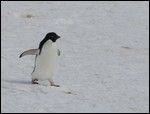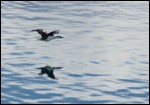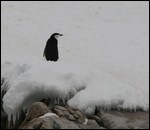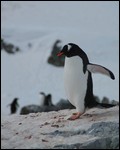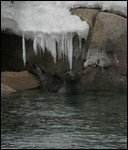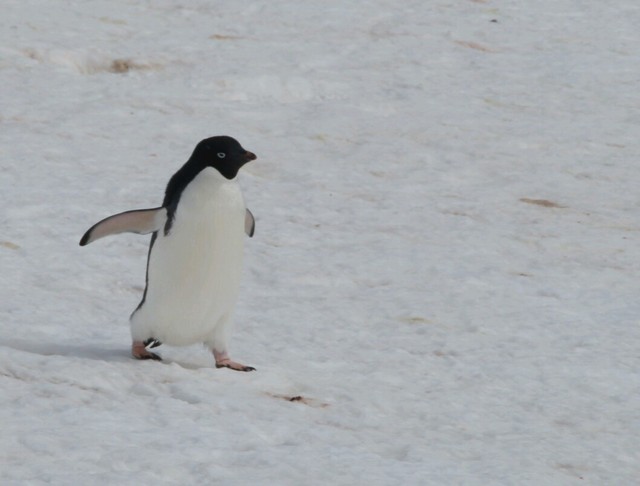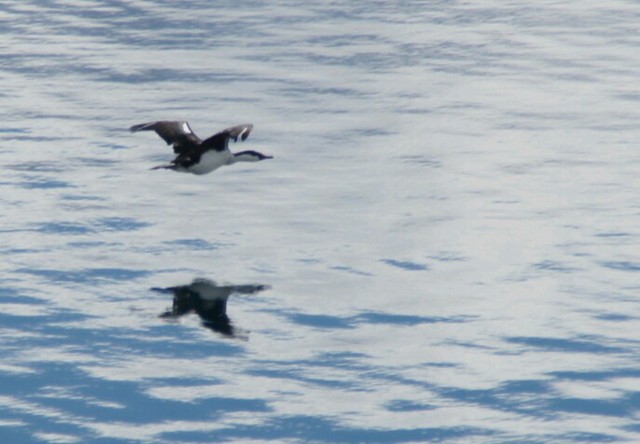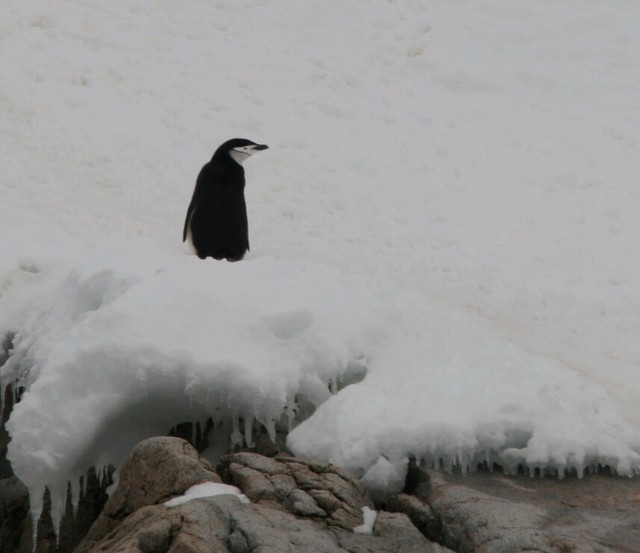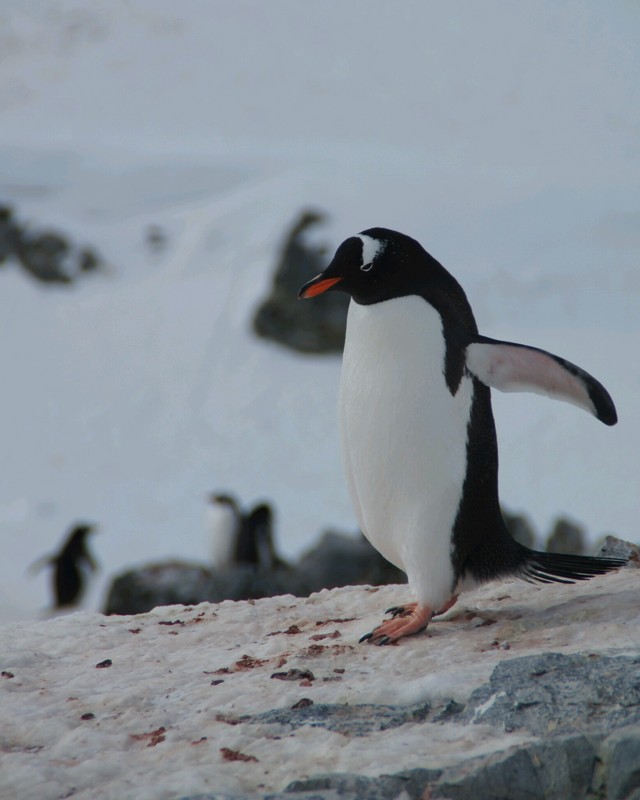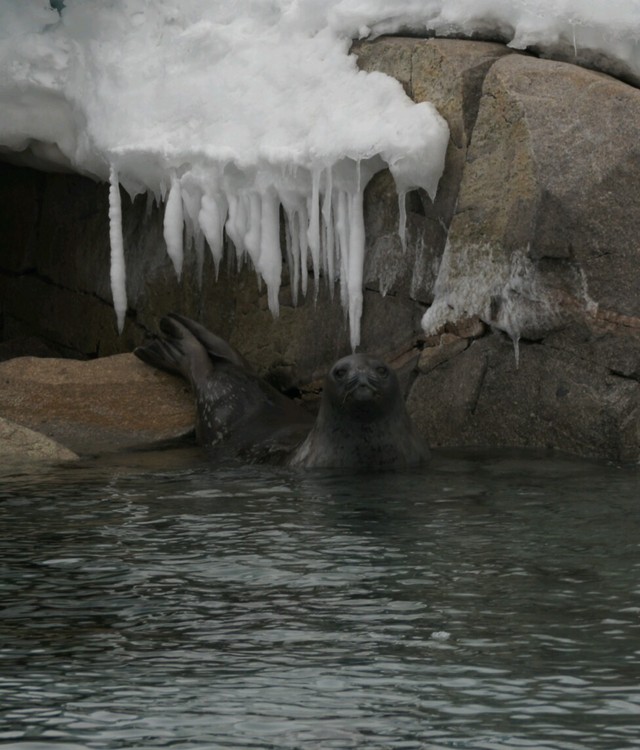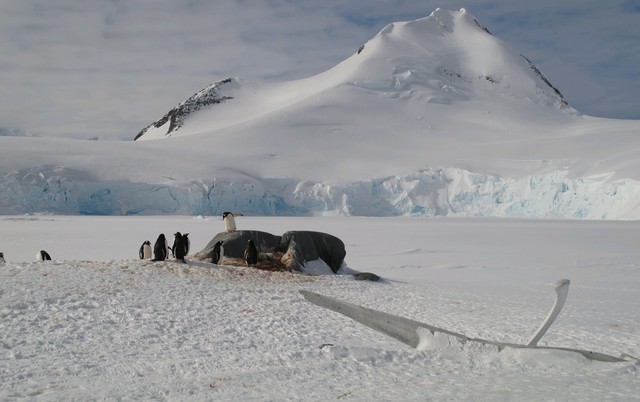As we sailed into the Antarctic archipelago, the waves decreased significantly. It was a stunning day; a few degrees below zero, hardly any wind and undescribable blue skies.
Even though just sailing in the untouched wilderness is breathtaking enough, with many an opportunity for blue-white landscape photos, the main purpose of this long journey was to set foot on actual Antarctic soil. And so, we loaded the zodiaks and whipped away towards the nearest island, Cuverville Island.
As we came closer, the cacaphony of birds could be heard, and a faint scent of guano could be sensed; the island was home to a large colony of Gentoo penguins, the by far most numerous species of penguins in the area. My camera's memory card filled up quickly. Not only are penguins quite photogenique, what with them being not in the least shy and moving rather slowly on land and all, but to shoot properly in wintery conditions, one has to pimp the camera settings a bit. Shooting RAW is essential to find the right whitebalance in post, and the tricky exposure needs to be bracketed, meaning that the camera takes three rapid shots; one normal, one under- and one over-exposed. Those are some tricks I picked up while attending a photography workshop on board.
I also attended some biology seminars on the way down, and can therefore give some details on Gentoo penguins. They are the third largest penguin species (after Emperor and King), they have red/orange bills and a white headband from eye to eye. At this time of year, their main source of food is krill, which explains the reddish tint to their guano, and also the clearly defined border between the unspoilt ice and snow and the red of the rookery.
Much rarer in the peninsula area are the Adélie penguins, but the occasional specimen do show up. They're slightly smaller than the Gentoos, and are entirely black-and-white, with black bills. One such had found its way to Cuverville and settled with the Gentoos. And finally, on Cuerva Cove, a colony of Chinstraps were spotted, and with that all three species to be expected on the peninsula.
Not all antarctic avians are flightless, though. On the way across the Drake we saw several petrells, tirns and albatrosses. Spending hours, days, and in the case of the wandering albatross, months without landing, these birds can be found even in the middle of the ocean, far far away from land.
Speaking of birds, we were on constant look-out for tits and boobies, but alas, they didn't show. The Antarctic shag did though. True story.
Apart from seabirds, penguins and the odd whale, the most commonly seen animals of the region are seals. The area is host to three species: Weddell seal (from the Weddell sea east of the peninsula), the Crabeater (which is a misnomer, as they eat krill and not crab) and the intimidating Leopard seal. I was unfortunately not blessed with spotting the leopard, but I did get to see a crabeater and a few Weddells. Amazing divers they are, the weddells; down to five hundred metres they hunt their pray, and can be subaquatic for an hour at the time.
The most significant thing that can be said about wildlife in Antarctica is how close they get. As human impact is minimal, the animals have hardly any fear of humans, ans especially the penguins can wobble straight up to you if you're still and calm. Antarctic wilderness is pristine, and tourism is heavily regulated. No organic material, such as food, drink and tobacco will be brought ashore, and if one hears and abides the call of nature, what is produced must get back to the ship. And any boots, tripods, rucksacks and velcro strips had to be thuroughly vacuumed, and the boots had to be brushed and sterilized before and after every shorelanding.
And so, a huge box had been ticked off: Visiting all seven continents of the world. Although, visiting Antarctica is a rough, hard and expensive deal, the uniqueness and undescrible beauty of the land is well worth it, and the giant checkbox is just icing on the cake; let me tell you, in no uncertain terms, that no still pictures, no BBC documentaries narrated by Sir David Attenborough and no Happy Feet 2 can make justice to what it's like. The colours, the smells, the wind, the sun, they all combine their powers into making a visit to the last coninent an incomparable experience!
To summarize: We stepped onto continental Antarctica and saw lots of penguins.
Fun factoid: It is well-known, to those who know it well, that all penguins are excellent divers. If one were to spot the entirely black-and-white species doing somersaults while hunting for krill, that would be Adélie, rolling in the deep.
